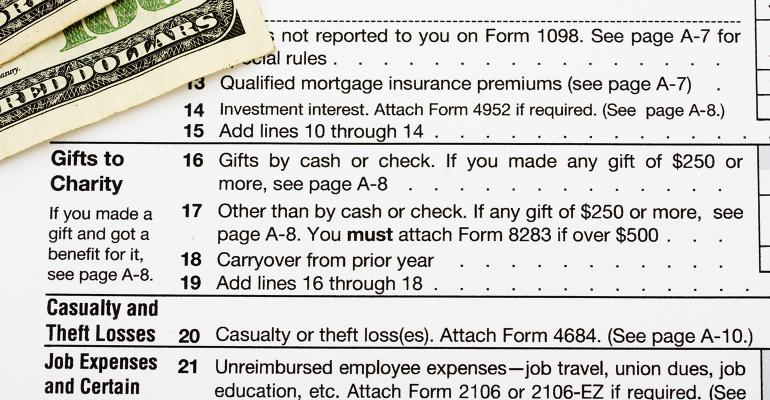In a recent survey of financial advisors, Fidelity Charitable found that advisors discuss charitable giving with nearly 60% of their clients. And while the frequency of charitable conversations over the past four years has been increasing, most advisors are still eager to learn more about specific planning strategies in which charitable giving can take the front seat.
With a decade-long bull market, and an overhaul of the tax system, now is the perfect time to immerse yourself in tax-smart charitable strategies to help your charitably inclined clients give more not only today but also in the future, as they consider how they may leave a legacy and, ultimately, find fulfillment.
Three planning ideas to help you get started:
1. Offsetting a high-income year. Chances are you have at least one client who has experienced a higher-than-usual income year triggered through a capital gains event like the sale of appreciated stock or a business interest, or as a result of a large bonus or other ordinary income windfall. While these situations are often a cause for celebration, in the moment most individuals don’t realize the significant tax implications they will soon face. If your client is charitably inclined, they may want to consider how they can manage or reduce their tax liability by flexing their philanthropic muscle. One way is for them to adjust the cadence of their giving to help them maximize tax savings even further.
For example, if your client is planning to donate on an annual basis for the next three years, they may consider accelerating their giving by donating all three years’ worth of giving into one, taking the standard deduction in subsequent years. Alternatively, your client may desire to make one large donation while their income is at its peak but continue to donate annually. Both strategies will help them achieve tax efficiency by enabling them to be eligible for a tax deduction in the year where it matters the most—helping them offset some of the associated tax burden. What’s more, if they pair the strategy with a strategic giving vehicle like a donor-advised fund (DAF), they can continue to give annual support to their favorite causes.
2. Planning for giving in retirement. As your clients enter the next chapter of their lives, they’ll be able to shift their focus from generating wealth to preserving it and distributing it through charity, gifts or inheritance. Retirees have more time available, and many have an intrinsic drive and desire to express their generosity. In fact, those born before 1964 account for nearly 70% of all charitable giving.
Offer strategies that can help them create a charitable nest egg in their potentially highest-earning years leading up to retirement, so they can sustain their giving in retirement and beyond. If they have appreciated stock, they can fund their charitable giving and minimize any capital gains exposure. Are they in a higher tax bracket now versus when they will retire? They can benefit from an accelerated giving strategy like the one mentioned above.
Clients who are already enjoying retirement can benefit by making a qualified charitable distribution directly from a traditional IRA to their favorite charity (though not to a DAF). Not only are such distributions, up to $100,000 per year, excluded from taxable income, they also count toward the required minimum distribution.
3. Building a tradition of family philanthropy. Consider helping clients leave a lasting legacy by incorporating their family in their giving. It’s an excellent way to help them—and you—feel connected and fulfilled while ensuring that wealth and values are preserved across generations.
A good first step is to find out what clients and families care about. Before engaging in practical discussions of tactics and products, try to gauge a client’s passion for giving, host a family meeting and try other steps in our Family Forward guide.
Putting it into practice
To feel confident and competent about initiating these conversations, advisors can learn more about philanthropic planning through resources, like Fidelity Charitable’s Practice Management Program, that help advisors deepen their knowledge. (And most qualify for CFP credit!) Advisors can also obtain a Chartered Advisor in Philanthropy (CAP) designation to demonstrate they have the background and tools to service clients in this area.
Don’t overlook the charitable conversation. It all starts with determining the extent of your client’s philanthropic desires and weaving charitable giving into planning discussions that may center on life’s biggest moments.
Karla Valas is the head of fundraising at Fidelity Charitable.





